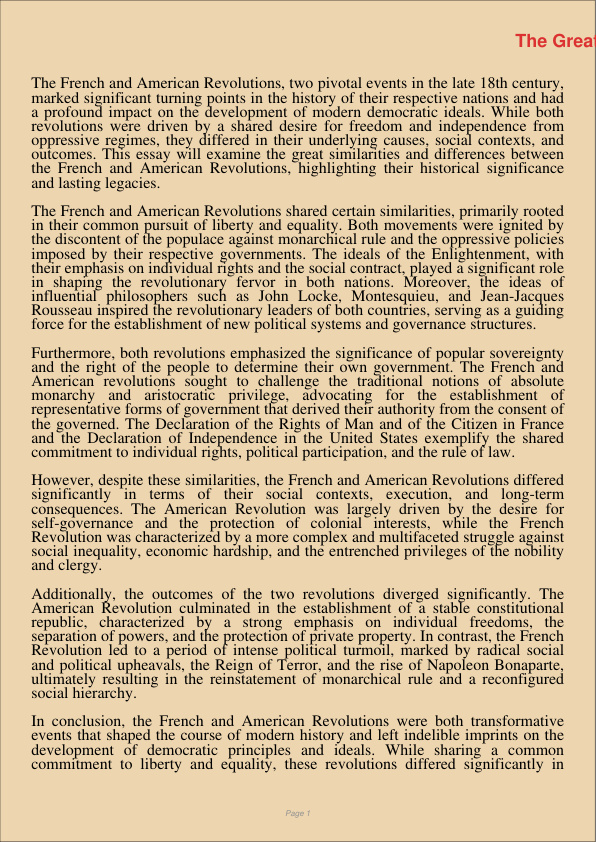The Great Similarities And Differences Between The French And American Revolutions
Dec 31, 2023
great similarities
american revolutions
Biology
Literature

The French and American Revolutions, two pivotal events in the late 18th century, marked significant turning points in the history of their respective nations and had a profound impact on the development of modern democratic ideals. While both revolutions were driven by a shared desire for freedom and independence from oppressive regimes, they differed in their underlying causes, social contexts, and outcomes. This essay will examine the great similarities and differences between the French and American Revolutions, highlighting their historical significance and lasting legacies.
The French and American Revolutions shared certain similarities, primarily rooted in their common pursuit of liberty and equality. Both movements were ignited by the discontent of the populace against monarchical rule and the oppressive policies imposed by their respective governments. The ideals of the Enlightenment, with their emphasis on individual rights and the social contract, played a significant role in shaping the revolutionary fervor in both nations. Moreover, the ideas of influential philosophers such as John Locke, Montesquieu, and Jean-Jacques Rousseau inspired the revolutionary leaders of both countries, serving as a guiding force for the establishment of new political systems and governance structures.
Furthermore, both revolutions emphasized the significance of popular sovereignty and the right of the people to determine their own government. The French and American revolutions sought to challenge the traditional notions of absolute monarchy and aristocratic privilege, advocating for the establishment of representative forms of government that derived their authority from the consent of the governed. The Declaration of the Rights of Man and of the Citizen in France and the Declaration of Independence in the United States exemplify the shared commitment to individual rights, political participation, and the rule of law.
However, despite these similarities, the French and American Revolutions differed significantly in terms of their social contexts, execution, and long-term consequences. The American Revolution was largely driven by the desire for self-governance and the protection of colonial interests, while the French Revolution was characterized by a more complex and multifaceted struggle against social inequality, economic hardship, and the entrenched privileges of the nobility and clergy.
Additionally, the outcomes of the two revolutions diverged significantly. The American Revolution culminated in the establishment of a stable constitutional republic, characterized by a strong emphasis on individual freedoms, the separation of powers, and the protection of private property. In contrast, the French Revolution led to a period of intense political turmoil, marked by radical social and political upheavals, the Reign of Terror, and the rise of Napoleon Bonaparte, ultimately resulting in the reinstatement of monarchical rule and a reconfigured social hierarchy.
In conclusion, the French and American Revolutions were both transformative events that shaped the course of modern history and left indelible imprints on the development of democratic principles and ideals. While sharing a common commitment to liberty and equality, these revolutions differed significantly in terms of their underlying causes, social dynamics, and long-term outcomes. Despite their divergent paths, both revolutions continue to serve as enduring symbols of the enduring struggle for political freedom, social justice, and the protection of individual rights.